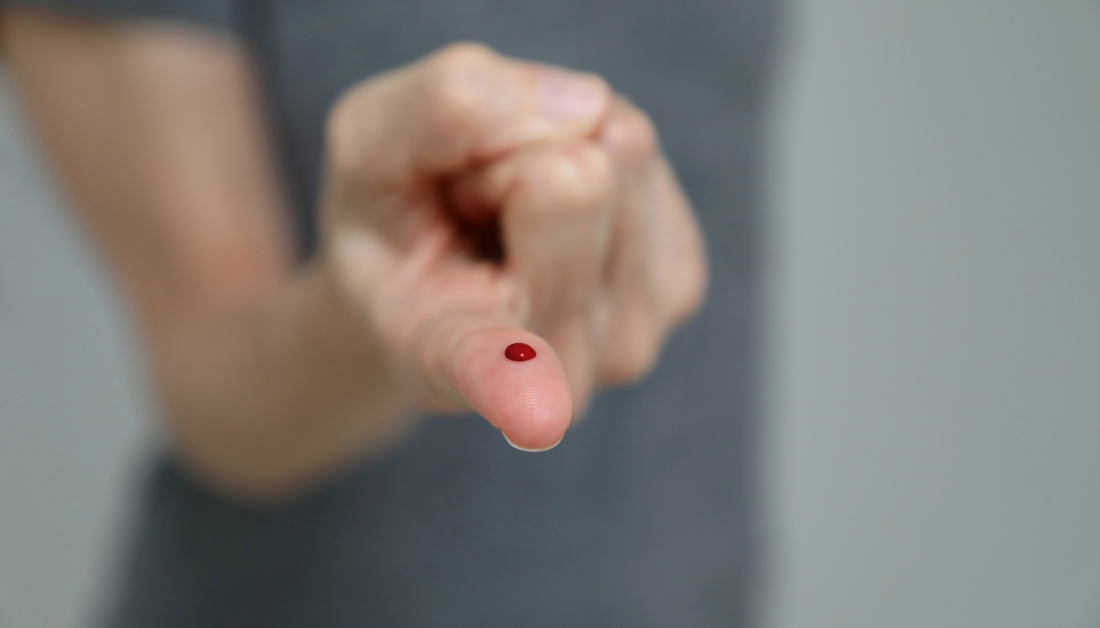

An international research consortium led by LMU tested a new quick analytical equipment that just requires a blood sample from the fingertip for tuberculosis diagnosis.
Every year, over 240,000 children worldwide die from TB. The disease is one among the top ten killers of children under the age of five. One of the main reasons for increased mortality is that tuberculosis is frequently misdiagnosed or not detected in time, especially in resource-limited areas. A new diagnostic tool, tested as part of a large-scale study in five countries by an international research consortium led by LMU medical scientists Laura Olbrich and Norbert Heinrich from the Division of Infectious Diseases and Tropical Medicine at LMU University Hospital Munich, represents significant progress in this area contributing to tuberculosis diagmosis. The authors report on their findings in The Lancet Infectious Diseases.
Before now, the most commonly used tuberculosis tests have been based on microbiological analysis of sputum – that is, mucus taken from the lower airways. These samples are difficult to obtain in children. Moreover, child tuberculosis is often characterized by a low bacterial load and unspecific symptoms. “Therefore, new tests are urgently needed,” says Olbrich.
Simple Rapid Blood Test
The researchers’ new method is based on the activation of three specific genes, which can be evaluated in capillary blood. A novel semi-automated technique enables health-care workers to establish a transcriptome signature for these genes. This transcriptomic signature can help to tuberculosis diagnosis. The test has the advantage that the blood sample can be conveniently taken from the fingertip and the results are available very quickly: “We have the results in just over an hour. For most other tests, the samples have to be sent to other laboratories for analysis,” says Olbrich.
The new tool was tested as part of the larger RaPaed-TB tuberculosis project directed by Heinrich and conducted in partnership with partners in South Africa, Mozambique, Tanzania, Malawi, and India. The study included 975 children under the age of 15 who were suspected of having tuberculosis. To establish the test’s accuracy, the researchers also investigated the children’s tuberculosis status using a standardized reference test based on the study of sputum and bacterial cultures.
The results were encouraging. Compared to detection in culture, the test identified almost 60 percent of children with tuberculosis, with 90-percent specificity. This makes the test comparable with or better than all other tests that work with biomarkers. The bacterial culture is always the reference because it yields the most stable results. But it takes up to eight weeks and is often not available where children with tuberculosis present.”
Laura Olbrich, Division of Infectious Diseases and Tropical Medicine, LMU University Hospital Munich
Because the new tool’s reference signature was mostly identified from adult samples, the researchers believe that the test accuracy can be enhanced further by altering the signature computation for youngsters.
For more information: Diagnostic accuracy of a three-gene Mycobacterium tuberculosis host response cartridge using fingerstick blood for childhood tuberculosis: a multicentre prospective study in low-income and middle-income countries. The Lancet Infectious Diseases.
more recommended stories
 Safer Allogeneic Stem Cell Transplants with Treg Therapy
Safer Allogeneic Stem Cell Transplants with Treg TherapyA new preclinical study from the.
 AI in Emergency Medicine and Clinician Decision Accuracy
AI in Emergency Medicine and Clinician Decision AccuracyEmergency teams rely on rapid, accurate.
 Innovative AI Boosts Epilepsy Seizure Prediction by 44%
Innovative AI Boosts Epilepsy Seizure Prediction by 44%Transforming Seizure Prediction in Epilepsy Seizure.
 Hypnosis Boosts NIV Tolerance in Respiratory Failure
Hypnosis Boosts NIV Tolerance in Respiratory FailureA New Approach: Hypnosis Improves NIV.
 Bee-Sting Microneedle Patch for Painless Drug Delivery
Bee-Sting Microneedle Patch for Painless Drug DeliveryMicroneedle Patch: A Pain-Free Alternative for.
 AI Reshapes Anticoagulation in Atrial Fibrillation Care
AI Reshapes Anticoagulation in Atrial Fibrillation CareUnderstanding the Challenge of Atrial Fibrillation.
 Hemoglobin as Brain Antioxidant in Neurodegenerative Disease
Hemoglobin as Brain Antioxidant in Neurodegenerative DiseaseUncovering the Brain’s Own Defense Against.
 Global Data Resource for Progressive MS Research (Multiple Sclerosis)
Global Data Resource for Progressive MS Research (Multiple Sclerosis)The International Progressive MS Alliance has.
 AI Diabetes Risk Detection: Early T2D Prediction
AI Diabetes Risk Detection: Early T2D PredictionA new frontier in early diabetes.
 Cancer Cells Learn to Self-Report: A New Frontier in Immunotherapy
Cancer Cells Learn to Self-Report: A New Frontier in ImmunotherapyHow a Drug Complex Enables Immune.

Leave a Comment